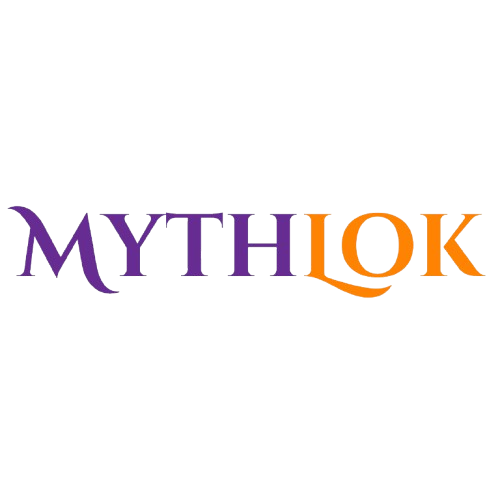Exploring Inuit Tribes and Their Mythology: Legends of the Arctic
The Inuit people, indigenous to the Arctic regions of Canada, Greenland, and Alaska, have a rich and diverse cultural heritage deeply intertwined with mythology and oral traditions. Inuit mythology is a tapestry of stories that explain the natural world, the spirit realm, and the customs that govern daily life. Across the Arctic, different Inuit tribes have distinct myths, beliefs, and deities that reflect their environments and ways of life. Understanding the different Inuit tribes in Inuit mythology provides insight into how these groups interpreted the forces around them and shaped their cultural identities.
The Inuit Tribes and Their Mythologies
Iñupiat
The Iñupiat people primarily inhabit northern Alaska, with their mythology centered on the harsh Arctic environment and its influence on survival. Their stories emphasize the relationship between humans, animals, and spirits. One of the most prominent figures in Iñupiat mythology is Sedna, the goddess of the sea, who controls marine animals and must be appeased by shamans to ensure a successful hunt. Another significant belief among the Iñupiat is that of Tornit, a race of large, hairy humanoid beings believed to have once coexisted with the Inuit but were driven away due to conflicts.
Yupik
The Yupik people, living along the western coast of Alaska and parts of Siberia, have a mythology distinct from other Inuit groups due to their interactions with Siberian indigenous cultures. The Yupik shamanistic practices involve communication with spirits known as yua, which inhabit all living and non-living things. One of their central mythical beings is Kushtaka, a shape-shifting otter spirit that lures people to their deaths or, in some versions, grants them knowledge. The Yupik also believe in Raven, a trickster and creator figure who shapes the world and teaches lessons through mischief and cunning.
Inuvialuit
The Inuvialuit people of Canada’s Northwest Territories share many similarities with the Iñupiat but also have their unique mythological elements. Their stories often revolve around the Qallupilluit, mysterious sea creatures that snatch disobedient children who venture too close to the ice. They also believe in Nanook, the great polar bear spirit who governs the fate of hunters and decides who will be successful in their pursuit of food.
Netsilik Inuit
The Netsilik Inuit, residing in Nunavut, Canada, are known for their deeply spiritual beliefs and reliance on storytelling to pass down cultural knowledge. Their mythology includes powerful spirits such as Sila, the personification of weather and the sky, who dictates the conditions of the land. They also speak of Tatqim (or Tatqiq), the moon spirit who watches over the Earth and influences hunting and fertility cycles.
Caribou Inuit
The Caribou Inuit, as their name suggests, rely heavily on caribou for sustenance and their mythology reflects this dependency. They believe in Tuurngait, powerful spirits that assist shamans in healing and guiding souls. These spirits are considered both benevolent and malevolent, depending on how they are approached. Their myths also highlight the Soul of the Caribou, which is said to require respect and ritual observance to ensure continued prosperity for the tribe.
Greenlandic Inuit (Kalaallit)
The Kalaallit of Greenland have mythology that shares elements with other Inuit groups but also has unique characteristics due to their geographical isolation. One of the most feared spirits in Kalaallit mythology is Eqalussuarsuk, a monstrous sea creature that terrorizes fishermen. The Kalaallit also believe in Arnakuagsak, a protective maternal deity similar to Sedna, who watches over children and hunters.
Common Themes in Inuit Mythology
Despite their geographical spread and cultural variations, Inuit tribes share common mythological themes:
- Respect for Nature: The belief that spirits inhabit the land, sea, and sky is a unifying concept. Natural elements are considered alive and must be honored to maintain balance.
- Animal Spirits and Transformations: Many myths feature shape-shifting beings, such as wolves, ravens, and otters, symbolizing the fluid connection between humans and animals.
- Survival and Adaptation: Stories often revolve around lessons of endurance, adaptability, and wisdom to navigate the harsh Arctic conditions.
- Shamanism: Shamans, or angakkuq, are central figures in Inuit mythology, acting as intermediaries between the human world and the spiritual realm.
The Legacy of Inuit Mythology Today
Modern Inuit communities continue to preserve and share their mythological heritage through storytelling, art, and cultural initiatives. Inuit mythology is being reintroduced into contemporary literature, films, and educational curricula to keep these traditions alive for future generations. The revival of Inuit languages and oral histories ensures that the spirits, deities, and legends of different Inuit tribes remain an integral part of their cultural identity.
As the world becomes more interconnected, the significance of Inuit mythology extends beyond indigenous communities, offering valuable insights into human relationships with nature, spirituality, and resilience. By learning about the different Inuit tribes in Inuit mythology, we gain a deeper appreciation of their rich traditions and the wisdom embedded in their stories.
No posts were found.





